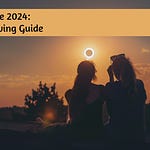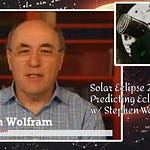Hello Everyone!
This week on The Cosmic Companion, we are Seeing the Invisible. We’ll be discussing how astronomers study objects in space which are invisible to the human eye.
Later on, we will be talking with Anand Varma, creator of a new book, Invisible Wonders: Photographs of the Hidden World, from National Geographic.
When we look up in the sky, we see stars, planets, and our moon. Optical telescopes can reveal planets, nebulae, and some of the other wonders of the Cosmos.
Anand Varma appears on The Cosmic Companion 21 Oct. 2023. Released under Creative Commons 4.0 Attribution 2023 The Cosmic Companion.
The light with which the human eye sees objects is limited to just one tiny stretch of frequencies in the electromagnetic spectrum. Beyond the red part of the rainbow lies infrared, microwaves, and radio waves. At the other extreme, past violet, are ultraviolet waves, X-rays, and gamma rays. Each of these bands of electromagnetic radiation represents a field of astronomy, revealing its own secrets of the Universe.
We’ll start our exploration with the red end of the spectrum, where light has its longest wavelengths.
INFRARED: At the heart of our Milky Way galaxy, shrouded in a veil of cosmic dust and gas, lies the Galactic Center. Surrounded by dust, this core is impossible to see in visible light. Infrared light, however, can see through this dusty mask.
Cool stars, planets, and dust clouds radiate most of their light in the form of heat — infrared waves — the same wavelengths of light produced by television remote controls. Utilizing infrared and radio telescopes, astronomers can peer into these celestial nurseries where stars are born and witness their spectral glow.
MICROWAVES: The same frequencies of electromagnetic waves that melt butter for popcorn for home movie night can also teach us about the Universe.
In orbit above the Earth, satellites examine the Earth in microwaves, peering through clouds, forests, and haze to monitor our atmosphere.
Everywhere we look, an echo of the Big Bang can still be seen in microwave wavelengths, providing extraordinary evidence for the explosive birth of the Universe.
RADIO WAVES: Who doesn’t love the idea of finding extraterrestrial life? The Search for Extraterrestrial Intelligence, or SETI, started searching radio waves for signs of intelligent life in the Universe in 1985.
Similar programs, including the Breakthrough Listen Project are currently analyzing vast amounts of data from radio signals in the search for life beyond the Earth.
The study of this invisible light could result in the greatest discovery in the history of our species.
Next up, we talk with Anand Varma about his new book, Invisible Wonders: Photographs of the Hidden World.
The cooler events in space, seen at the red end of the rainbow, are bookended by the violet side of the spectrum.
However, the atmosphere of Earth blocks nearly all radiation more energetic than visible light. In order to study the Cosmos in these wavelengths, astronomers must lift instruments above most or all of the atmosphere, using balloons and rockets.
ULTRAVIOLET: Beyond violet in visible spectrum lies ultraviolet. These frequencies of light are not only responsible for tans, and revealing details about dirty rooms you did NOT want to know, they also tell us about the surface of the Sun.
NASA’s Solar Dynamics Observatory spacecraft (SDO) broadcasts images of the Sun at various wavelengths, particularly in ultraviolet, for the public to enjoy, free of charge.
The Hubble Space Telescope, capable of seeing into UV wavelengths, has recorded auroral (polar lights) on Jupiter.
X-RAYS: No, the Universe hasn’t broken its arm. Again. X-ray astronomers record the gargantuan explosions of supermassive stars in X-ray light. Matter falling into a black hole radiates light in X-rays just prior to falling forever into the cosmic abyss.
X-Rays have wavelengths so short, nearly all photons of this radiation would pass through mirrors if struck straight-on. Therefore, focusing X-rays requires mirrors that provide a “glancing blow” each slightly changing the direction of photons.
GAMMA RAYS: The shortest wavelengths of light are seen as gamma rays. These frequencies of light are so short, they pass right through most materials. To detect them, astronomers utilize densely packed crystal blocks. When struck by a gamma ray, electrons change position, releasing a photon of light which can be seen.
Gamma ray bursts (GRBs) are the most energetic events known, releasing more energy in 10 seconds than the Sun will emit in 10 billion years.
These brief yet brilliant explosions are thought to be caused by the collapse of massive stars or the merger of neutron stars. Invisible to our eyes, they shine brightly in gamma-ray light and provide insights into extreme physics. A GRB event near Earth would be catastrophic to most life on our planet.
In addition to em radiation, astronomers are now even examining the Cosmos by looking at gravitational waves, studying ripples in the fabric of spacetime.
Most of what is happening in the Universe is invisible to the human eye, but by Seeing the Invisible, we witness some of the most interesting events in the Cosmos.
Next week on The Cosmic Companion is our Halloween Special — We’ll be looking at The Top 10 Ways Space is Trying to Kill You. We will be talking with astrophysicist and science communicator Ethan Siegel, host of Starts with a Bang. Make sure to join us starting on 21 October.
If you enjoyed this episode of The Cosmic Companion. Wait. You enjoyed it, right? Good. You want to see more episodes, right? Of COURSE you do! All you have to do is subscribe, follow, and share the show wherever you found this episode. Easy Peasy!
Clear skies!
James
























Seeing the Invisible w/ Anand Varma, Invisible Wonders, Nat Geo